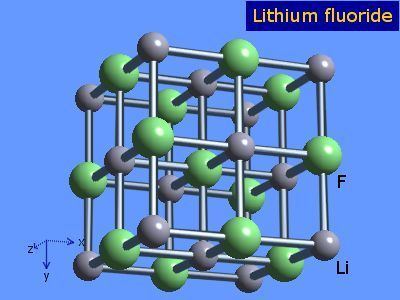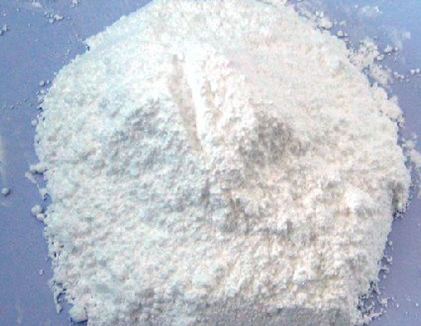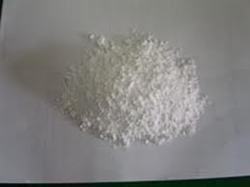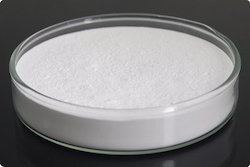Formula LiF Density 2.64 g/cm³ | Molar mass 25.939 g/mol Boiling point 1,673 °C | |
 | ||
Appearance white powder or transparent crystals, non-hygroscopic Similar Lithium chloride, Potassium fluoride, Sodium nitride | ||
Ionic bonding of lithium fluoride potassium oxide chemistry for all fuseschool
Lithium fluoride is an inorganic compound with the chemical formula LiF. It is a colorless solid, that transitions to white with decreasing crystal size. Although odorless, lithium fluoride has a bitter-saline taste. Its structure is analogous to that of sodium chloride, but it is much less soluble in water. It is mainly used as a component of molten salts. Formation of LiF releases one of the highest energy per mass of reactants, only second to that of BeO.
Contents
- Ionic bonding of lithium fluoride potassium oxide chemistry for all fuseschool
- Ionic bonding of lithium fluoride amp potassium oxide chemistry for all fuseschool
- Manufacturing
- In molten salts
- Optics
- Radiation detectors
- Nuclear reactors
- Cathode for PLED and OLEDs
- Natural occurrence
- References

Ionic bonding of lithium fluoride amp potassium oxide chemistry for all fuseschool
Manufacturing

LiF is prepared from lithium hydroxide and hydrogen fluoride or by dissolving lithium carbonate in excess hydrogen fluoride, evaporating to dryness and heating to red hot.
In molten salts

Fluorine is produced by the electrolysis of molten potassium bifluoride. This electrolysis proceeds more efficiently when the electrolyte contains a few percent of LiF, possibly because it facilitates formation of Li-C-F interface on the carbon electrodes. A useful molten salt, FLiNaK, consists of a mixture of LiF, together with sodium fluoride and potassium fluoride. The primary coolant for the Molten-Salt Reactor Experiment was FLiBe; LiF-BeF2 (66-33 mol%).
Optics

Because of its large band gap, LiF crystals are transparent to short wavelength ultraviolet radiation, more so than any other material. LiF is therefore used in specialized UV optics, (See also magnesium fluoride). Lithium fluoride is used also as a diffracting crystal in X-ray spectrometry.
Radiation detectors

It is also used as a means to record ionizing radiation exposure from gamma rays, beta particles, and neutrons (indirectly, using the 6
3Li
(n,alpha) nuclear reaction) in thermoluminescent dosimeters.
Nuclear reactors
Lithium fluoride (highly enriched in the common isotope lithium-7) forms the basic constituent of the preferred fluoride salt mixture used in liquid-fluoride nuclear reactors. Typically lithium fluoride is mixed with beryllium fluoride to form a base solvent (FLiBe), into which fluorides of uranium and thorium are introduced. Lithium fluoride is exceptionally chemically stable and LiF/BeF2 mixtures (FLiBe) have low melting points (360 C - 459 C) and the best neutronic properties of fluoride salt combinations appropriate for reactor use. MSRE used two different mixtures in the two cooling circuits.
Cathode for PLED and OLEDs
Lithium fluoride is widely used in PLED and OLED as a coupling layer to enhance electron injection. The thickness of LiF layer is usually around 1 nm. The dielectric constant (or relative permittivity) of LiF is 9.0
Natural occurrence
Naturally occurring lithium fluoride is known as the mineral griceite. It is extremely rare.
